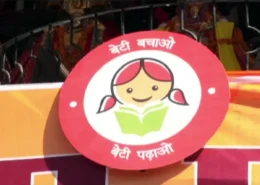Draw attention to the variations between India’s Dalit movements prior to and following independence.
Post-independent India has witnessed numerous agrarian struggles, ranging from Telangana peasant movement and PEPSU tenants movements to Naxalite or Maoist movements in the late 1960s and new farmers movements of 1980 to farmers movements in the era of globalization. There is a visible shift in theRead more
Post-independent India has witnessed numerous agrarian struggles, ranging from Telangana peasant movement and PEPSU tenants movements to Naxalite or Maoist movements in the late 1960s and new farmers movements of 1980 to farmers movements in the era of globalization. There is a visible shift in the nature of these struggles from immediately after independence to struggles during the green revolution era and struggles driven by market access etc of globalization.
Characteristics Of Agrarian Struggle Since Independence
1.In the post-independent period, new developments like the Green revolution, the Commercialization of agriculture, land reforms, the spread of literacy, and the emergence of powerful farm lobbies in legislatures gave new dimensions to agrarian struggle. 2.Agrarian movements post-independence are more organized. Unlike earlier movements where struggles started at the grass-root level and then had larger political organizations, post-independent struggles are organized from the beginning. 3.The post-independent struggles also continued the colonial time class struggle between landlords and peasants. However, in the post-independent era, these struggles between landlords and peasants were organized through organizations like Kisan sabha. 4.Pre-Green revolution agrarian movements: During this era agrarian movements were political movements too. These movements were mainly started by CPI, CPM, Socialists, and Naxalites. The demands during this era were land reforms, and wages for the poorer classes, and prices of the products, and making available the infrastructure in agriculture. 5.Farmers or rural rich movements: The period of the Green revolution i.e during the 1960s and 70s saw movements from a section that can be called farmers or middle peasants or rural rich. These movements emerged in prosperous regions of the country that experienced the green revolution.
- The socially middle or intermediate caste-like Jats, Yadavs, Marathas, Lingayats, formed the largest composition of these movements.
- Their demands are mostly related to the market economy like remunerative prices, subsidized inputs, reduction in electricity bills.
6. New Farmers movements of the 1980s: The period of the 1980s saw the widespread mobilization of grassroots rural dwellers. While the movements of the 1960s and 70s were mostly by rich farmers, the 1980s movements had grassroots mobilization. These movements are not linked to any political parties (at least in the earlier stages) . Started by Sharad Joshi who articulated the ideology of the movement in terms of India versus Bharat or urban, industrial India versus rural agricultural Bharat, these movements saw farmers coming on the roads, stopping traffic, trains, indefinite dharnas.
- The main demands of these new farmers’ movements are remunerative prices for agricultural produce and lowering or elimination of government dues such as canal water charges, electricity charges, interest rates and principal of loans, etc.
- Though the demand of these movements is similar to the demands of rich farmer movements of the 1970s, the wide social base and grassroot mobilization made these movements a genuine peasant movement.
7. Farmers’ movements in Globalization era: These movements were a reaction against globalization and the perceived attempt of western countries to interfere in the Indian agrarian economy through GATT, WHO, etc. . However, the farmer’s movements in this period are not uniform unlike the 1980s movements as the main proponent of the new farmer’s movement Sharad Joshi supported Globalization while other prominent leaders like Mahendra Singh of BKU opposed it. Thus it divided the farmer’s movement. 8. Recent movements: The recent farmer’s movements were mostly based on issues like MSP, loan waivers, better credit facilities, against certain legislation which farmers perceive to be harmful to them. Agrarian struggle in India has a long history. From fighting against colonial states against oppressive taxation policies, these struggles have evolved into rights-based struggles in recent times. Most of the class struggle of pre-independent India became class and caste struggle in the post-green revolution period. The nature of these movements is constantly evolving with the changing nature of Indian agriculture, society, and economy.
See less

 . These services also prevent and treat sexually transmitted infections, boosting community health.
. These services also prevent and treat sexually transmitted infections, boosting community health.
Dalits are those groups of people who have faced social discrimination including the untouchability. They largely belong to the economically disadvantaged groups of our society. Dalit movement raises issues of caste-based discrimination and economic inequality. It is a struggle for social justice. TRead more
Dalits are those groups of people who have faced social discrimination including the untouchability. They largely belong to the economically disadvantaged groups of our society. Dalit movement raises issues of caste-based discrimination and economic inequality. It is a struggle for social justice. There is no single unified Dalit movement in the country either in the past or in the present. Different movements highlighted different issues related to Dalits based on different ideologies. The common thread however among all the movements is all of them assert a Dalit identity.
Dalit Movements During Pre Independence Period
Dalit Movements During Pre Independence Period
Dalit movements cannot be explained satisfactorily by referring only to economic exploitation or political oppression. The movement at its core is a struggle for recognition of fellow human beings. Dalit mobilisation and movements in India have helped in the virtual disappearance of untouchability in urban areas and in rural areas that it has declined drastically. It helped in creating awareness among Dalits about their Political rights. But still, there is a need for greater participation, assertion and mobilisation of Dalits at the all India level for the complete annihilation of Caste.
See less